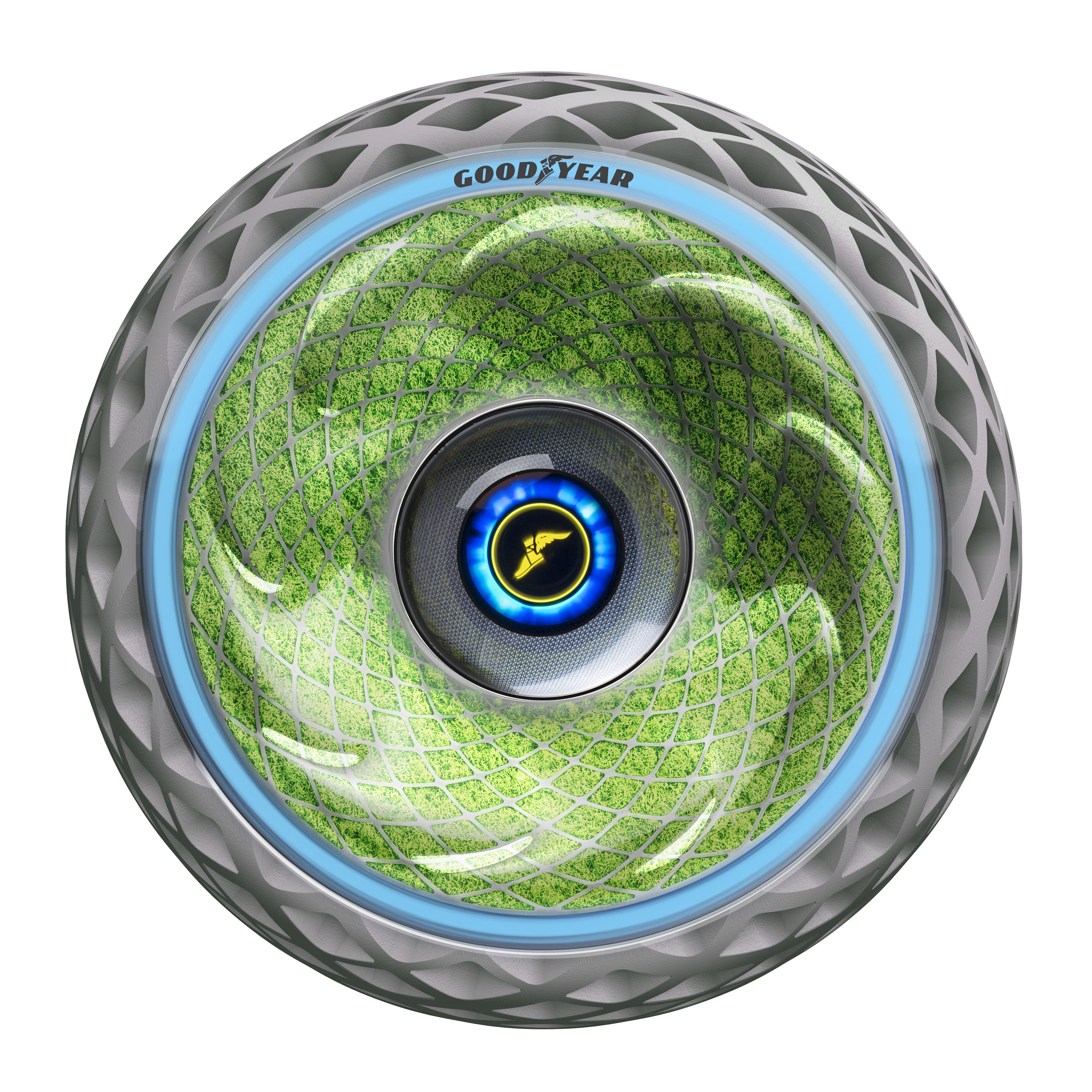How cool is this? Goodyear introduced at the recent 2018 Geneva International Motor Show its new concept tire called Oxygene, which has a unique structure that features living moss growing within the sidewall to help clean the air. This open structure and the tire’s smart tread design absorb and circulate moisture and water from the road surface, allowing photosynthesis to occur (inhaling CO2) and therefore releasing oxygen into the air.
Inspired by the principles of the circular economy, with emphasis on reducing material waste, emissions, and energy loss, Goodyear said its Oxygene concept is designed to integrate seamlessly into future cityscapes, featuring several performance solutions:
- Cleaning the Air We Breathe: Oxygene absorbs moisture from the road through its unique tread and inhales CO2 from the air to feed the moss in its sidewall and release oxygen via photosynthesis. In a city similar in size to greater Paris with about 2.5 million vehicles, this would mean generating nearly 3,000 tons of oxygen and absorbing more than 4,000 tons of carbon dioxide per year.
- Recycling Worn Tires: Oxygene features a non-pneumatic construction that is 3D-printed with rubber powder from recycled tires. The lightweight, shock-absorbing structure provides a long-lasting, puncture-free solution intended to extend the life of the tire and minimize service issues, delivering worry-free mobility. Additional safety is ensured by the tire’s open structure, which improves wet grip by helping absorb water from the tread.
- Generating its Own Electricity: Oxygene harvests the energy generated during photosynthesis to power its embedded electronics, including onboard sensors, an artificial intelligence processing unit, and a customizable light strip in the tire’s sidewall that switches colors, warning both road users and pedestrians of upcoming maneuvers, such as lane changes or braking.
- Communicating at the Speed of Light: Oxygene uses a visible light communications system, or LiFi, for high-capacity mobile connectivity at the speed of light. LiFi enables the tire to connect to the Internet of Things, allowing vehicle-to-vehicle (V2V) and vehicle-to-infrastructure (V2I) data exchange, which is critical to smart mobility management systems.




